-
EXECUTIVE SUMMARY
-
Market Overview
-
Key Findings
-
Market Segmentation
-
Competitive Landscape
-
Challenges and Opportunities
-
Future Outlook
-
MARKET INTRODUCTION
-
Definition
-
Scope of the study
-
Research Objective
-
Assumption
-
Limitations
-
RESEARCH METHODOLOGY
-
Overview
-
Data Mining
-
Secondary Research
-
Primary Research
-
Primary Interviews and Information Gathering Process
-
Breakdown of Primary Respondents
-
Forecasting Model
-
Market Size Estimation
-
Bottom-Up Approach
-
Top-Down Approach
-
Data Triangulation
-
Validation
-
MARKET DYNAMICS
-
Overview
-
Drivers
-
Restraints
-
Opportunities
-
MARKET FACTOR ANALYSIS
-
Value chain Analysis
-
Porter's Five Forces Analysis
-
Bargaining Power of Suppliers
-
Bargaining Power of Buyers
-
Threat of New Entrants
-
Threat of Substitutes
-
Intensity of Rivalry
-
COVID-19 Impact Analysis
-
Market Impact Analysis
-
Regional Impact
-
Opportunity and Threat Analysis
-
Cookware Market, BY Material (USD Billion)
-
Stainless Steel
-
Cast Iron
-
Non-Stick
-
Copper
-
Ceramic
-
Cookware Market, BY Product Type (USD Billion)
-
Pans
-
Cookware Sets
-
Baking Dishes
-
Pressure Cookers
-
Steamer
-
Cookware Market, BY End Use (USD Billion)
-
Residential
-
Commercial
-
Institutional
-
Cookware Market, BY Distribution Channel (USD Billion)
-
Online
-
Retail
-
Direct Sales
-
Wholesale
-
Cookware Market, BY Regional (USD Billion)
-
North America
-
US
-
Canada
-
Europe
-
Germany
-
UK
-
France
-
Russia
-
Italy
-
Spain
-
Rest of Europe
-
APAC
-
China
-
India
-
Japan
-
South Korea
-
Malaysia
-
Thailand
-
Indonesia
-
Rest of APAC
-
South America
-
Brazil
-
Mexico
-
Argentina
-
Rest of South America
-
MEA
-
GCC Countries
-
South Africa
-
Rest of MEA
-
Competitive Landscape
-
Overview
-
Competitive Analysis
-
Market share Analysis
-
Major Growth Strategy in the Cookware Market
-
Competitive Benchmarking
-
Leading Players in Terms of Number of Developments in the Cookware Market
-
Key developments and growth strategies
-
New Product Launch/Service Deployment
-
Merger & Acquisitions
-
Joint Ventures
-
Major Players Financial Matrix
-
Sales and Operating Income
-
Major Players R&D Expenditure. 2023
-
Company Profiles
-
Scanpan
-
Financial Overview
-
Products Offered
-
Key Developments
-
SWOT Analysis
-
Key Strategies
-
Tramontina
-
Financial Overview
-
Products Offered
-
Key Developments
-
SWOT Analysis
-
Key Strategies
-
Meyer Corporation
-
Financial Overview
-
Products Offered
-
Key Developments
-
SWOT Analysis
-
Key Strategies
-
ZWILLING J.A. Henckels
-
Financial Overview
-
Products Offered
-
Key Developments
-
SWOT Analysis
-
Key Strategies
-
Farberware
-
Financial Overview
-
Products Offered
-
Key Developments
-
SWOT Analysis
-
Key Strategies
-
Tefal
-
Financial Overview
-
Products Offered
-
Key Developments
-
SWOT Analysis
-
Key Strategies
-
Cuisinart
-
Financial Overview
-
Products Offered
-
Key Developments
-
SWOT Analysis
-
Key Strategies
-
Cookware Company
-
Financial Overview
-
Products Offered
-
Key Developments
-
SWOT Analysis
-
Key Strategies
-
Lodge Manufacturing Company
-
Financial Overview
-
Products Offered
-
Key Developments
-
SWOT Analysis
-
Key Strategies
-
Newell Brands
-
Financial Overview
-
Products Offered
-
Key Developments
-
SWOT Analysis
-
Key Strategies
-
Calphalon
-
Financial Overview
-
Products Offered
-
Key Developments
-
SWOT Analysis
-
Key Strategies
-
Pampered Chef
-
Financial Overview
-
Products Offered
-
Key Developments
-
SWOT Analysis
-
Key Strategies
-
AllClad
-
Financial Overview
-
Products Offered
-
Key Developments
-
SWOT Analysis
-
Key Strategies
-
Williams Sonoma
-
Financial Overview
-
Products Offered
-
Key Developments
-
SWOT Analysis
-
Key Strategies
-
Le Creuset
-
Financial Overview
-
Products Offered
-
Key Developments
-
SWOT Analysis
-
Key Strategies
-
Appendix
-
References
-
Related Reports
-
LIST Of tables
-
LIST OF ASSUMPTIONS
-
North America Cookware Market SIZE ESTIMATES & FORECAST, BY MATERIAL, 2019-2035 (USD Billions)
-
North America Cookware Market SIZE ESTIMATES & FORECAST, BY PRODUCT TYPE, 2019-2035 (USD Billions)
-
North America Cookware Market SIZE ESTIMATES & FORECAST, BY END USE, 2019-2035 (USD Billions)
-
North America Cookware Market SIZE ESTIMATES & FORECAST, BY DISTRIBUTION CHANNEL, 2019-2035 (USD Billions)
-
North America Cookware Market SIZE ESTIMATES & FORECAST, BY REGIONAL, 2019-2035 (USD Billions)
-
US Cookware Market SIZE ESTIMATES & FORECAST, BY MATERIAL, 2019-2035 (USD Billions)
-
US Cookware Market SIZE ESTIMATES & FORECAST, BY PRODUCT TYPE, 2019-2035 (USD Billions)
-
US Cookware Market SIZE ESTIMATES & FORECAST, BY END USE, 2019-2035 (USD Billions)
-
US Cookware Market SIZE ESTIMATES & FORECAST, BY DISTRIBUTION CHANNEL, 2019-2035 (USD Billions)
-
US Cookware Market SIZE ESTIMATES & FORECAST, BY REGIONAL, 2019-2035 (USD Billions)
-
Canada Cookware Market SIZE ESTIMATES & FORECAST, BY MATERIAL, 2019-2035 (USD Billions)
-
Canada Cookware Market SIZE ESTIMATES & FORECAST, BY PRODUCT TYPE, 2019-2035 (USD Billions)
-
Canada Cookware Market SIZE ESTIMATES & FORECAST, BY END USE, 2019-2035 (USD Billions)
-
Canada Cookware Market SIZE ESTIMATES & FORECAST, BY DISTRIBUTION CHANNEL, 2019-2035 (USD Billions)
-
Canada Cookware Market SIZE ESTIMATES & FORECAST, BY REGIONAL, 2019-2035 (USD Billions)
-
Europe Cookware Market SIZE ESTIMATES & FORECAST, BY MATERIAL, 2019-2035 (USD Billions)
-
Europe Cookware Market SIZE ESTIMATES & FORECAST, BY PRODUCT TYPE, 2019-2035 (USD Billions)
-
Europe Cookware Market SIZE ESTIMATES & FORECAST, BY END USE, 2019-2035 (USD Billions)
-
Europe Cookware Market SIZE ESTIMATES & FORECAST, BY DISTRIBUTION CHANNEL, 2019-2035 (USD Billions)
-
Europe Cookware Market SIZE ESTIMATES & FORECAST, BY REGIONAL, 2019-2035 (USD Billions)
-
Germany Cookware Market SIZE ESTIMATES & FORECAST, BY MATERIAL, 2019-2035 (USD Billions)
-
Germany Cookware Market SIZE ESTIMATES & FORECAST, BY PRODUCT TYPE, 2019-2035 (USD Billions)
-
Germany Cookware Market SIZE ESTIMATES & FORECAST, BY END USE, 2019-2035 (USD Billions)
-
Germany Cookware Market SIZE ESTIMATES & FORECAST, BY DISTRIBUTION CHANNEL, 2019-2035 (USD Billions)
-
Germany Cookware Market SIZE ESTIMATES & FORECAST, BY REGIONAL, 2019-2035 (USD Billions)
-
UK Cookware Market SIZE ESTIMATES & FORECAST, BY MATERIAL, 2019-2035 (USD Billions)
-
UK Cookware Market SIZE ESTIMATES & FORECAST, BY PRODUCT TYPE, 2019-2035 (USD Billions)
-
UK Cookware Market SIZE ESTIMATES & FORECAST, BY END USE, 2019-2035 (USD Billions)
-
UK Cookware Market SIZE ESTIMATES & FORECAST, BY DISTRIBUTION CHANNEL, 2019-2035 (USD Billions)
-
UK Cookware Market SIZE ESTIMATES & FORECAST, BY REGIONAL, 2019-2035 (USD Billions)
-
France Cookware Market SIZE ESTIMATES & FORECAST, BY MATERIAL, 2019-2035 (USD Billions)
-
France Cookware Market SIZE ESTIMATES & FORECAST, BY PRODUCT TYPE, 2019-2035 (USD Billions)
-
France Cookware Market SIZE ESTIMATES & FORECAST, BY END USE, 2019-2035 (USD Billions)
-
France Cookware Market SIZE ESTIMATES & FORECAST, BY DISTRIBUTION CHANNEL, 2019-2035 (USD Billions)
-
France Cookware Market SIZE ESTIMATES & FORECAST, BY REGIONAL, 2019-2035 (USD Billions)
-
Russia Cookware Market SIZE ESTIMATES & FORECAST, BY MATERIAL, 2019-2035 (USD Billions)
-
Russia Cookware Market SIZE ESTIMATES & FORECAST, BY PRODUCT TYPE, 2019-2035 (USD Billions)
-
Russia Cookware Market SIZE ESTIMATES & FORECAST, BY END USE, 2019-2035 (USD Billions)
-
Russia Cookware Market SIZE ESTIMATES & FORECAST, BY DISTRIBUTION CHANNEL, 2019-2035 (USD Billions)
-
Russia Cookware Market SIZE ESTIMATES & FORECAST, BY REGIONAL, 2019-2035 (USD Billions)
-
Italy Cookware Market SIZE ESTIMATES & FORECAST, BY MATERIAL, 2019-2035 (USD Billions)
-
Italy Cookware Market SIZE ESTIMATES & FORECAST, BY PRODUCT TYPE, 2019-2035 (USD Billions)
-
Italy Cookware Market SIZE ESTIMATES & FORECAST, BY END USE, 2019-2035 (USD Billions)
-
Italy Cookware Market SIZE ESTIMATES & FORECAST, BY DISTRIBUTION CHANNEL, 2019-2035 (USD Billions)
-
Italy Cookware Market SIZE ESTIMATES & FORECAST, BY REGIONAL, 2019-2035 (USD Billions)
-
Spain Cookware Market SIZE ESTIMATES & FORECAST, BY MATERIAL, 2019-2035 (USD Billions)
-
Spain Cookware Market SIZE ESTIMATES & FORECAST, BY PRODUCT TYPE, 2019-2035 (USD Billions)
-
Spain Cookware Market SIZE ESTIMATES & FORECAST, BY END USE, 2019-2035 (USD Billions)
-
Spain Cookware Market SIZE ESTIMATES & FORECAST, BY DISTRIBUTION CHANNEL, 2019-2035 (USD Billions)
-
Spain Cookware Market SIZE ESTIMATES & FORECAST, BY REGIONAL, 2019-2035 (USD Billions)
-
Rest of Europe Cookware Market SIZE ESTIMATES & FORECAST, BY MATERIAL, 2019-2035 (USD Billions)
-
Rest of Europe Cookware Market SIZE ESTIMATES & FORECAST, BY PRODUCT TYPE, 2019-2035 (USD Billions)
-
Rest of Europe Cookware Market SIZE ESTIMATES & FORECAST, BY END USE, 2019-2035 (USD Billions)
-
Rest of Europe Cookware Market SIZE ESTIMATES & FORECAST, BY DISTRIBUTION CHANNEL, 2019-2035 (USD Billions)
-
Rest of Europe Cookware Market SIZE ESTIMATES & FORECAST, BY REGIONAL, 2019-2035 (USD Billions)
-
APAC Cookware Market SIZE ESTIMATES & FORECAST, BY MATERIAL, 2019-2035 (USD Billions)
-
APAC Cookware Market SIZE ESTIMATES & FORECAST, BY PRODUCT TYPE, 2019-2035 (USD Billions)
-
APAC Cookware Market SIZE ESTIMATES & FORECAST, BY END USE, 2019-2035 (USD Billions)
-
APAC Cookware Market SIZE ESTIMATES & FORECAST, BY DISTRIBUTION CHANNEL, 2019-2035 (USD Billions)
-
APAC Cookware Market SIZE ESTIMATES & FORECAST, BY REGIONAL, 2019-2035 (USD Billions)
-
China Cookware Market SIZE ESTIMATES & FORECAST, BY MATERIAL, 2019-2035 (USD Billions)
-
China Cookware Market SIZE ESTIMATES & FORECAST, BY PRODUCT TYPE, 2019-2035 (USD Billions)
-
China Cookware Market SIZE ESTIMATES & FORECAST, BY END USE, 2019-2035 (USD Billions)
-
China Cookware Market SIZE ESTIMATES & FORECAST, BY DISTRIBUTION CHANNEL, 2019-2035 (USD Billions)
-
China Cookware Market SIZE ESTIMATES & FORECAST, BY REGIONAL, 2019-2035 (USD Billions)
-
India Cookware Market SIZE ESTIMATES & FORECAST, BY MATERIAL, 2019-2035 (USD Billions)
-
India Cookware Market SIZE ESTIMATES & FORECAST, BY PRODUCT TYPE, 2019-2035 (USD Billions)
-
India Cookware Market SIZE ESTIMATES & FORECAST, BY END USE, 2019-2035 (USD Billions)
-
India Cookware Market SIZE ESTIMATES & FORECAST, BY DISTRIBUTION CHANNEL, 2019-2035 (USD Billions)
-
India Cookware Market SIZE ESTIMATES & FORECAST, BY REGIONAL, 2019-2035 (USD Billions)
-
Japan Cookware Market SIZE ESTIMATES & FORECAST, BY MATERIAL, 2019-2035 (USD Billions)
-
Japan Cookware Market SIZE ESTIMATES & FORECAST, BY PRODUCT TYPE, 2019-2035 (USD Billions)
-
Japan Cookware Market SIZE ESTIMATES & FORECAST, BY END USE, 2019-2035 (USD Billions)
-
Japan Cookware Market SIZE ESTIMATES & FORECAST, BY DISTRIBUTION CHANNEL, 2019-2035 (USD Billions)
-
Japan Cookware Market SIZE ESTIMATES & FORECAST, BY REGIONAL, 2019-2035 (USD Billions)
-
South Korea Cookware Market SIZE ESTIMATES & FORECAST, BY MATERIAL, 2019-2035 (USD Billions)
-
South Korea Cookware Market SIZE ESTIMATES & FORECAST, BY PRODUCT TYPE, 2019-2035 (USD Billions)
-
South Korea Cookware Market SIZE ESTIMATES & FORECAST, BY END USE, 2019-2035 (USD Billions)
-
South Korea Cookware Market SIZE ESTIMATES & FORECAST, BY DISTRIBUTION CHANNEL, 2019-2035 (USD Billions)
-
South Korea Cookware Market SIZE ESTIMATES & FORECAST, BY REGIONAL, 2019-2035 (USD Billions)
-
Malaysia Cookware Market SIZE ESTIMATES & FORECAST, BY MATERIAL, 2019-2035 (USD Billions)
-
Malaysia Cookware Market SIZE ESTIMATES & FORECAST, BY PRODUCT TYPE, 2019-2035 (USD Billions)
-
Malaysia Cookware Market SIZE ESTIMATES & FORECAST, BY END USE, 2019-2035 (USD Billions)
-
Malaysia Cookware Market SIZE ESTIMATES & FORECAST, BY DISTRIBUTION CHANNEL, 2019-2035 (USD Billions)
-
Malaysia Cookware Market SIZE ESTIMATES & FORECAST, BY REGIONAL, 2019-2035 (USD Billions)
-
Thailand Cookware Market SIZE ESTIMATES & FORECAST, BY MATERIAL, 2019-2035 (USD Billions)
-
Thailand Cookware Market SIZE ESTIMATES & FORECAST, BY PRODUCT TYPE, 2019-2035 (USD Billions)
-
Thailand Cookware Market SIZE ESTIMATES & FORECAST, BY END USE, 2019-2035 (USD Billions)
-
Thailand Cookware Market SIZE ESTIMATES & FORECAST, BY DISTRIBUTION CHANNEL, 2019-2035 (USD Billions)
-
Thailand Cookware Market SIZE ESTIMATES & FORECAST, BY REGIONAL, 2019-2035 (USD Billions)
-
Indonesia Cookware Market SIZE ESTIMATES & FORECAST, BY MATERIAL, 2019-2035 (USD Billions)
-
Indonesia Cookware Market SIZE ESTIMATES & FORECAST, BY PRODUCT TYPE, 2019-2035 (USD Billions)
-
Indonesia Cookware Market SIZE ESTIMATES & FORECAST, BY END USE, 2019-2035 (USD Billions)
-
Indonesia Cookware Market SIZE ESTIMATES & FORECAST, BY DISTRIBUTION CHANNEL, 2019-2035 (USD Billions)
-
Indonesia Cookware Market SIZE ESTIMATES & FORECAST, BY REGIONAL, 2019-2035 (USD Billions)
-
Rest of APAC Cookware Market SIZE ESTIMATES & FORECAST, BY MATERIAL, 2019-2035 (USD Billions)
-
Rest of APAC Cookware Market SIZE ESTIMATES & FORECAST, BY PRODUCT TYPE, 2019-2035 (USD Billions)
-
Rest of APAC Cookware Market SIZE ESTIMATES & FORECAST, BY END USE, 2019-2035 (USD Billions)
-
Rest of APAC Cookware Market SIZE ESTIMATES & FORECAST, BY DISTRIBUTION CHANNEL, 2019-2035 (USD Billions)
-
Rest of APAC Cookware Market SIZE ESTIMATES & FORECAST, BY REGIONAL, 2019-2035 (USD Billions)
-
South America Cookware Market SIZE ESTIMATES & FORECAST, BY MATERIAL, 2019-2035 (USD Billions)
-
South America Cookware Market SIZE ESTIMATES & FORECAST, BY PRODUCT TYPE, 2019-2035 (USD Billions)
-
South America Cookware Market SIZE ESTIMATES & FORECAST, BY END USE, 2019-2035 (USD Billions)
-
South America Cookware Market SIZE ESTIMATES & FORECAST, BY DISTRIBUTION CHANNEL, 2019-2035 (USD Billions)
-
South America Cookware Market SIZE ESTIMATES & FORECAST, BY REGIONAL, 2019-2035 (USD Billions)
-
Brazil Cookware Market SIZE ESTIMATES & FORECAST, BY MATERIAL, 2019-2035 (USD Billions)
-
Brazil Cookware Market SIZE ESTIMATES & FORECAST, BY PRODUCT TYPE, 2019-2035 (USD Billions)
-
Brazil Cookware Market SIZE ESTIMATES & FORECAST, BY END USE, 2019-2035 (USD Billions)
-
Brazil Cookware Market SIZE ESTIMATES & FORECAST, BY DISTRIBUTION CHANNEL, 2019-2035 (USD Billions)
-
Brazil Cookware Market SIZE ESTIMATES & FORECAST, BY REGIONAL, 2019-2035 (USD Billions)
-
Mexico Cookware Market SIZE ESTIMATES & FORECAST, BY MATERIAL, 2019-2035 (USD Billions)
-
Mexico Cookware Market SIZE ESTIMATES & FORECAST, BY PRODUCT TYPE, 2019-2035 (USD Billions)
-
Mexico Cookware Market SIZE ESTIMATES & FORECAST, BY END USE, 2019-2035 (USD Billions)
-
Mexico Cookware Market SIZE ESTIMATES & FORECAST, BY DISTRIBUTION CHANNEL, 2019-2035 (USD Billions)
-
Mexico Cookware Market SIZE ESTIMATES & FORECAST, BY REGIONAL, 2019-2035 (USD Billions)
-
Argentina Cookware Market SIZE ESTIMATES & FORECAST, BY MATERIAL, 2019-2035 (USD Billions)
-
Argentina Cookware Market SIZE ESTIMATES & FORECAST, BY PRODUCT TYPE, 2019-2035 (USD Billions)
-
Argentina Cookware Market SIZE ESTIMATES & FORECAST, BY END USE, 2019-2035 (USD Billions)
-
Argentina Cookware Market SIZE ESTIMATES & FORECAST, BY DISTRIBUTION CHANNEL, 2019-2035 (USD Billions)
-
Argentina Cookware Market SIZE ESTIMATES & FORECAST, BY REGIONAL, 2019-2035 (USD Billions)
-
Rest of South America Cookware Market SIZE ESTIMATES & FORECAST, BY MATERIAL, 2019-2035 (USD Billions)
-
Rest of South America Cookware Market SIZE ESTIMATES & FORECAST, BY PRODUCT TYPE, 2019-2035 (USD Billions)
-
Rest of South America Cookware Market SIZE ESTIMATES & FORECAST, BY END USE, 2019-2035 (USD Billions)
-
Rest of South America Cookware Market SIZE ESTIMATES & FORECAST, BY DISTRIBUTION CHANNEL, 2019-2035 (USD Billions)
-
Rest of South America Cookware Market SIZE ESTIMATES & FORECAST, BY REGIONAL, 2019-2035 (USD Billions)
-
MEA Cookware Market SIZE ESTIMATES & FORECAST, BY MATERIAL, 2019-2035 (USD Billions)
-
MEA Cookware Market SIZE ESTIMATES & FORECAST, BY PRODUCT TYPE, 2019-2035 (USD Billions)
-
MEA Cookware Market SIZE ESTIMATES & FORECAST, BY END USE, 2019-2035 (USD Billions)
-
MEA Cookware Market SIZE ESTIMATES & FORECAST, BY DISTRIBUTION CHANNEL, 2019-2035 (USD Billions)
-
MEA Cookware Market SIZE ESTIMATES & FORECAST, BY REGIONAL, 2019-2035 (USD Billions)
-
GCC Countries Cookware Market SIZE ESTIMATES & FORECAST, BY MATERIAL, 2019-2035 (USD Billions)
-
GCC Countries Cookware Market SIZE ESTIMATES & FORECAST, BY PRODUCT TYPE, 2019-2035 (USD Billions)
-
GCC Countries Cookware Market SIZE ESTIMATES & FORECAST, BY END USE, 2019-2035 (USD Billions)
-
GCC Countries Cookware Market SIZE ESTIMATES & FORECAST, BY DISTRIBUTION CHANNEL, 2019-2035 (USD Billions)
-
GCC Countries Cookware Market SIZE ESTIMATES & FORECAST, BY REGIONAL, 2019-2035 (USD Billions)
-
South Africa Cookware Market SIZE ESTIMATES & FORECAST, BY MATERIAL, 2019-2035 (USD Billions)
-
South Africa Cookware Market SIZE ESTIMATES & FORECAST, BY PRODUCT TYPE, 2019-2035 (USD Billions)
-
South Africa Cookware Market SIZE ESTIMATES & FORECAST, BY END USE, 2019-2035 (USD Billions)
-
South Africa Cookware Market SIZE ESTIMATES & FORECAST, BY DISTRIBUTION CHANNEL, 2019-2035 (USD Billions)
-
South Africa Cookware Market SIZE ESTIMATES & FORECAST, BY REGIONAL, 2019-2035 (USD Billions)
-
Rest of MEA Cookware Market SIZE ESTIMATES & FORECAST, BY MATERIAL, 2019-2035 (USD Billions)
-
Rest of MEA Cookware Market SIZE ESTIMATES & FORECAST, BY PRODUCT TYPE, 2019-2035 (USD Billions)
-
Rest of MEA Cookware Market SIZE ESTIMATES & FORECAST, BY END USE, 2019-2035 (USD Billions)
-
Rest of MEA Cookware Market SIZE ESTIMATES & FORECAST, BY DISTRIBUTION CHANNEL, 2019-2035 (USD Billions)
-
Rest of MEA Cookware Market SIZE ESTIMATES & FORECAST, BY REGIONAL, 2019-2035 (USD Billions)
-
PRODUCT LAUNCH/PRODUCT DEVELOPMENT/APPROVAL
-
ACQUISITION/PARTNERSHIP
-
LIST Of figures
-
MARKET SYNOPSIS
-
NORTH AMERICA COOKWARE MARKET ANALYSIS
-
US COOKWARE MARKET ANALYSIS BY MATERIAL
-
US COOKWARE MARKET ANALYSIS BY PRODUCT TYPE
-
US COOKWARE MARKET ANALYSIS BY END USE
-
US COOKWARE MARKET ANALYSIS BY DISTRIBUTION CHANNEL
-
US COOKWARE MARKET ANALYSIS BY REGIONAL
-
CANADA COOKWARE MARKET ANALYSIS BY MATERIAL
-
CANADA COOKWARE MARKET ANALYSIS BY PRODUCT TYPE
-
CANADA COOKWARE MARKET ANALYSIS BY END USE
-
CANADA COOKWARE MARKET ANALYSIS BY DISTRIBUTION CHANNEL
-
CANADA COOKWARE MARKET ANALYSIS BY REGIONAL
-
EUROPE COOKWARE MARKET ANALYSIS
-
GERMANY COOKWARE MARKET ANALYSIS BY MATERIAL
-
GERMANY COOKWARE MARKET ANALYSIS BY PRODUCT TYPE
-
GERMANY COOKWARE MARKET ANALYSIS BY END USE
-
GERMANY COOKWARE MARKET ANALYSIS BY DISTRIBUTION CHANNEL
-
GERMANY COOKWARE MARKET ANALYSIS BY REGIONAL
-
UK COOKWARE MARKET ANALYSIS BY MATERIAL
-
UK COOKWARE MARKET ANALYSIS BY PRODUCT TYPE
-
UK COOKWARE MARKET ANALYSIS BY END USE
-
UK COOKWARE MARKET ANALYSIS BY DISTRIBUTION CHANNEL
-
UK COOKWARE MARKET ANALYSIS BY REGIONAL
-
FRANCE COOKWARE MARKET ANALYSIS BY MATERIAL
-
FRANCE COOKWARE MARKET ANALYSIS BY PRODUCT TYPE
-
FRANCE COOKWARE MARKET ANALYSIS BY END USE
-
FRANCE COOKWARE MARKET ANALYSIS BY DISTRIBUTION CHANNEL
-
FRANCE COOKWARE MARKET ANALYSIS BY REGIONAL
-
RUSSIA COOKWARE MARKET ANALYSIS BY MATERIAL
-
RUSSIA COOKWARE MARKET ANALYSIS BY PRODUCT TYPE
-
RUSSIA COOKWARE MARKET ANALYSIS BY END USE
-
RUSSIA COOKWARE MARKET ANALYSIS BY DISTRIBUTION CHANNEL
-
RUSSIA COOKWARE MARKET ANALYSIS BY REGIONAL
-
ITALY COOKWARE MARKET ANALYSIS BY MATERIAL
-
ITALY COOKWARE MARKET ANALYSIS BY PRODUCT TYPE
-
ITALY COOKWARE MARKET ANALYSIS BY END USE
-
ITALY COOKWARE MARKET ANALYSIS BY DISTRIBUTION CHANNEL
-
ITALY COOKWARE MARKET ANALYSIS BY REGIONAL
-
SPAIN COOKWARE MARKET ANALYSIS BY MATERIAL
-
SPAIN COOKWARE MARKET ANALYSIS BY PRODUCT TYPE
-
SPAIN COOKWARE MARKET ANALYSIS BY END USE
-
SPAIN COOKWARE MARKET ANALYSIS BY DISTRIBUTION CHANNEL
-
SPAIN COOKWARE MARKET ANALYSIS BY REGIONAL
-
REST OF EUROPE COOKWARE MARKET ANALYSIS BY MATERIAL
-
REST OF EUROPE COOKWARE MARKET ANALYSIS BY PRODUCT TYPE
-
REST OF EUROPE COOKWARE MARKET ANALYSIS BY END USE
-
REST OF EUROPE COOKWARE MARKET ANALYSIS BY DISTRIBUTION CHANNEL
-
REST OF EUROPE COOKWARE MARKET ANALYSIS BY REGIONAL
-
APAC COOKWARE MARKET ANALYSIS
-
CHINA COOKWARE MARKET ANALYSIS BY MATERIAL
-
CHINA COOKWARE MARKET ANALYSIS BY PRODUCT TYPE
-
CHINA COOKWARE MARKET ANALYSIS BY END USE
-
CHINA COOKWARE MARKET ANALYSIS BY DISTRIBUTION CHANNEL
-
CHINA COOKWARE MARKET ANALYSIS BY REGIONAL
-
INDIA COOKWARE MARKET ANALYSIS BY MATERIAL
-
INDIA COOKWARE MARKET ANALYSIS BY PRODUCT TYPE
-
INDIA COOKWARE MARKET ANALYSIS BY END USE
-
INDIA COOKWARE MARKET ANALYSIS BY DISTRIBUTION CHANNEL
-
INDIA COOKWARE MARKET ANALYSIS BY REGIONAL
-
JAPAN COOKWARE MARKET ANALYSIS BY MATERIAL
-
JAPAN COOKWARE MARKET ANALYSIS BY PRODUCT TYPE
-
JAPAN COOKWARE MARKET ANALYSIS BY END USE
-
JAPAN COOKWARE MARKET ANALYSIS BY DISTRIBUTION CHANNEL
-
JAPAN COOKWARE MARKET ANALYSIS BY REGIONAL
-
SOUTH KOREA COOKWARE MARKET ANALYSIS BY MATERIAL
-
SOUTH KOREA COOKWARE MARKET ANALYSIS BY PRODUCT TYPE
-
SOUTH KOREA COOKWARE MARKET ANALYSIS BY END USE
-
SOUTH KOREA COOKWARE MARKET ANALYSIS BY DISTRIBUTION CHANNEL
-
SOUTH KOREA COOKWARE MARKET ANALYSIS BY REGIONAL
-
MALAYSIA COOKWARE MARKET ANALYSIS BY MATERIAL
-
MALAYSIA COOKWARE MARKET ANALYSIS BY PRODUCT TYPE
-
MALAYSIA COOKWARE MARKET ANALYSIS BY END USE
-
MALAYSIA COOKWARE MARKET ANALYSIS BY DISTRIBUTION CHANNEL
-
MALAYSIA COOKWARE MARKET ANALYSIS BY REGIONAL
-
THAILAND COOKWARE MARKET ANALYSIS BY MATERIAL
-
THAILAND COOKWARE MARKET ANALYSIS BY PRODUCT TYPE
-
THAILAND COOKWARE MARKET ANALYSIS BY END USE
-
THAILAND COOKWARE MARKET ANALYSIS BY DISTRIBUTION CHANNEL
-
THAILAND COOKWARE MARKET ANALYSIS BY REGIONAL
-
INDONESIA COOKWARE MARKET ANALYSIS BY MATERIAL
-
INDONESIA COOKWARE MARKET ANALYSIS BY PRODUCT TYPE
-
INDONESIA COOKWARE MARKET ANALYSIS BY END USE
-
INDONESIA COOKWARE MARKET ANALYSIS BY DISTRIBUTION CHANNEL
-
INDONESIA COOKWARE MARKET ANALYSIS BY REGIONAL
-
REST OF APAC COOKWARE MARKET ANALYSIS BY MATERIAL
-
REST OF APAC COOKWARE MARKET ANALYSIS BY PRODUCT TYPE
-
REST OF APAC COOKWARE MARKET ANALYSIS BY END USE
-
REST OF APAC COOKWARE MARKET ANALYSIS BY DISTRIBUTION CHANNEL
-
REST OF APAC COOKWARE MARKET ANALYSIS BY REGIONAL
-
SOUTH AMERICA COOKWARE MARKET ANALYSIS
-
BRAZIL COOKWARE MARKET ANALYSIS BY MATERIAL
-
BRAZIL COOKWARE MARKET ANALYSIS BY PRODUCT TYPE
-
BRAZIL COOKWARE MARKET ANALYSIS BY END USE
-
BRAZIL COOKWARE MARKET ANALYSIS BY DISTRIBUTION CHANNEL
-
BRAZIL COOKWARE MARKET ANALYSIS BY REGIONAL
-
MEXICO COOKWARE MARKET ANALYSIS BY MATERIAL
-
MEXICO COOKWARE MARKET ANALYSIS BY PRODUCT TYPE
-
MEXICO COOKWARE MARKET ANALYSIS BY END USE
-
MEXICO COOKWARE MARKET ANALYSIS BY DISTRIBUTION CHANNEL
-
MEXICO COOKWARE MARKET ANALYSIS BY REGIONAL
-
ARGENTINA COOKWARE MARKET ANALYSIS BY MATERIAL
-
ARGENTINA COOKWARE MARKET ANALYSIS BY PRODUCT TYPE
-
ARGENTINA COOKWARE MARKET ANALYSIS BY END USE
-
ARGENTINA COOKWARE MARKET ANALYSIS BY DISTRIBUTION CHANNEL
-
ARGENTINA COOKWARE MARKET ANALYSIS BY REGIONAL
-
REST OF SOUTH AMERICA COOKWARE MARKET ANALYSIS BY MATERIAL
-
REST OF SOUTH AMERICA COOKWARE MARKET ANALYSIS BY PRODUCT TYPE
-
REST OF SOUTH AMERICA COOKWARE MARKET ANALYSIS BY END USE
-
REST OF SOUTH AMERICA COOKWARE MARKET ANALYSIS BY DISTRIBUTION CHANNEL
-
REST OF SOUTH AMERICA COOKWARE MARKET ANALYSIS BY REGIONAL
-
MEA COOKWARE MARKET ANALYSIS
-
GCC COUNTRIES COOKWARE MARKET ANALYSIS BY MATERIAL
-
GCC COUNTRIES COOKWARE MARKET ANALYSIS BY PRODUCT TYPE
-
GCC COUNTRIES COOKWARE MARKET ANALYSIS BY END USE
-
GCC COUNTRIES COOKWARE MARKET ANALYSIS BY DISTRIBUTION CHANNEL
-
GCC COUNTRIES COOKWARE MARKET ANALYSIS BY REGIONAL
-
SOUTH AFRICA COOKWARE MARKET ANALYSIS BY MATERIAL
-
SOUTH AFRICA COOKWARE MARKET ANALYSIS BY PRODUCT TYPE
-
SOUTH AFRICA COOKWARE MARKET ANALYSIS BY END USE
-
SOUTH AFRICA COOKWARE MARKET ANALYSIS BY DISTRIBUTION CHANNEL
-
SOUTH AFRICA COOKWARE MARKET ANALYSIS BY REGIONAL
-
REST OF MEA COOKWARE MARKET ANALYSIS BY MATERIAL
-
REST OF MEA COOKWARE MARKET ANALYSIS BY PRODUCT TYPE
-
REST OF MEA COOKWARE MARKET ANALYSIS BY END USE
-
REST OF MEA COOKWARE MARKET ANALYSIS BY DISTRIBUTION CHANNEL
-
REST OF MEA COOKWARE MARKET ANALYSIS BY REGIONAL
-
KEY BUYING CRITERIA OF COOKWARE MARKET
-
RESEARCH PROCESS OF MRFR
-
DRO ANALYSIS OF COOKWARE MARKET
-
DRIVERS IMPACT ANALYSIS: COOKWARE MARKET
-
RESTRAINTS IMPACT ANALYSIS: COOKWARE MARKET
-
SUPPLY / VALUE CHAIN: COOKWARE MARKET
-
COOKWARE MARKET, BY MATERIAL, 2025 (% SHARE)
-
COOKWARE MARKET, BY MATERIAL, 2019 TO 2035 (USD Billions)
-
COOKWARE MARKET, BY PRODUCT TYPE, 2025 (% SHARE)
-
COOKWARE MARKET, BY PRODUCT TYPE, 2019 TO 2035 (USD Billions)
-
COOKWARE MARKET, BY END USE, 2025 (% SHARE)
-
COOKWARE MARKET, BY END USE, 2019 TO 2035 (USD Billions)
-
COOKWARE MARKET, BY DISTRIBUTION CHANNEL, 2025 (% SHARE)
-
COOKWARE MARKET, BY DISTRIBUTION CHANNEL, 2019 TO 2035 (USD Billions)
-
COOKWARE MARKET, BY REGIONAL, 2025 (% SHARE)
-
COOKWARE MARKET, BY REGIONAL, 2019 TO 2035 (USD Billions)
-
BENCHMARKING OF MAJOR COMPETITORS
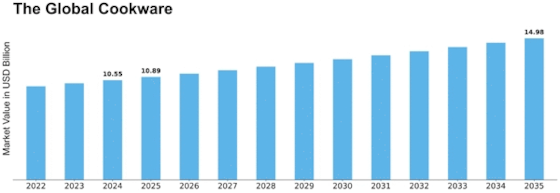

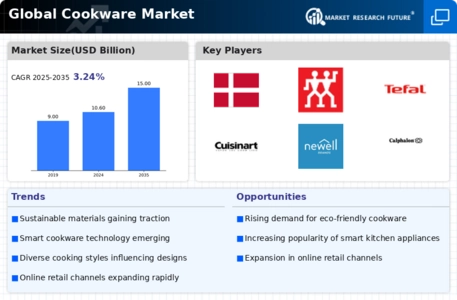
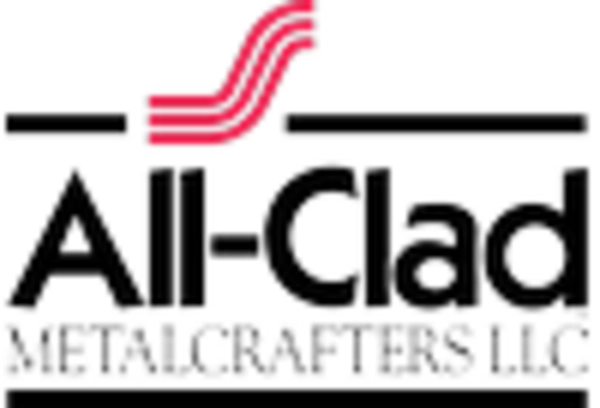
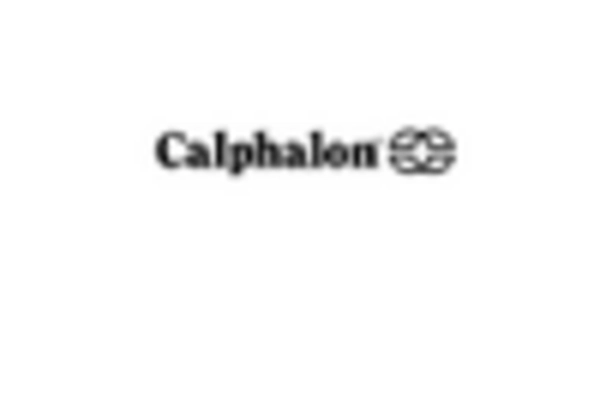
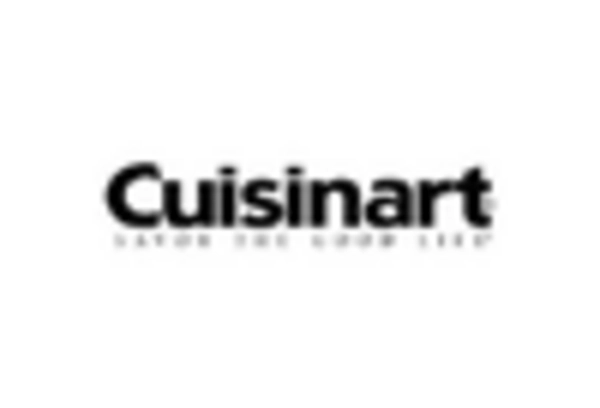
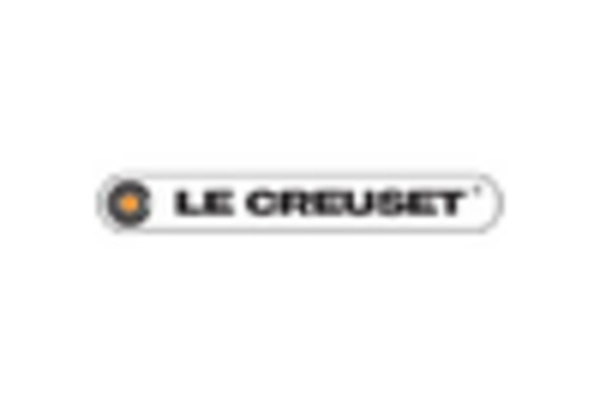

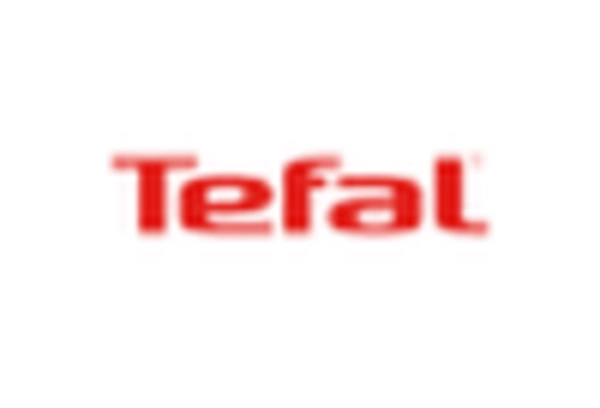









Leave a Comment